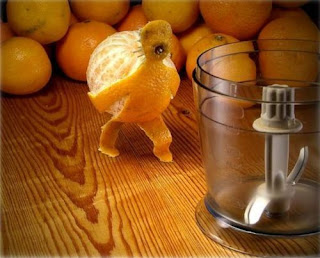
It probably comes as no surprise that those of us in the Voodoo Kitchen cook a lot of steaks, and we know we are not alone. Americans still love their red meat, we eat an average of 67 pounds of beef a year.
We want to share a few tips with you about buying and cooking a great steak.
It's great to trust the meat guy at the store but unfortunately, the guy behind that glass case might not know much about the meat he's selling. Most of the meat-cutting has already been done at a centralized location and then shipped "case-ready" to supermarket and super-center. Markets may have one guy who knows how to cut meat, but most of the others in the meat department may not be highly trained, real butchers are a dying breed.
The exceptions are some upscale or specialty chains, such as Whole Foods, Balducci's or Wegmans, or at the scattering of traditional butcher shops
So, what do you need to know when choosing the perfect steak?
Here are a few of our tips:
Pick out your steak by looking at each one carefully. If you want it to be juicy and tender for cooking on the grill, you want lots of little white flecks of fat in the meaty part, it's the marbling. The flecks melt away during cooking, adding to the meat's flavor. You also want it to be an even thickness, if it's thinner in some parts, it will cook unevenly.
If you're buying more than one steak, try to find cuts that are all close in size so they finish cooking at about the same time.
Look for thick cuts. Avoid steaks that are less than an inch thick, because they're too easy to overcook. Be careful when buying steaks in packs -- it's often difficult to get a side view to see just how thick they are.
Don't trim that fat. Yeah, we know, we've heard all the lectures. But leave most of the fat on the outside edge of the steak before cooking. The fat helps to keep the steak moist and hold its shape during cooking. It also enhances the meat's flavor. Once the steak is cooked, you can decide what to do with any excess fat.
Chuck and Round are tough guys, Rib and Loin are not. If the words "chuck" or "round" are in the name of the steak, it will need to be marinated and then slowly cooked in liquid to be tender. These are generally very lean cuts with lots of muscle fiber that need to be broken down with slow, long, moist heat. Don't even think of throwing a chuck steak on the grill. If the word "loin" is on the label, or the butcher tells you that a steak is cut from the loin (a strip steak, porterhouse or T-bone), these will be the most tender. Same goes for the word "rib," as in
rib-eye or rib steak. These can be cooked quickly -- on a grill, in the oven or on the stove in a pan.
Know the grades. The lower the grade, the leaner and tougher the beef. Prime is the top grade, in terms of flavor, marbling and tenderness, but very little prime beef ends up in mainstream markets. As far as consumers are concerned, there are really only two grades: choice and select. Those two make up almost all the meat being sold at the supermarket.
Choice is the higher grade, although it can encompass a wide range of quality ranging from close-to-prime to close-to-select. The leanest, least expensive meat is generally graded select and it makes up most of the share of meat in the self-service case.
Room temperature. Allow your steaks to reach room temp before cooking them. Taking them right out of the cooler and on to the grill or pan may cause the steak to burn of the outside and not cook evenly inside.
For a perfectly cooked steak. If you really have experience cooking meat and can simply touch the steak to determine when it's done, great. Otherwise buy a thermometer. There's nothing better than an instant-read thermometer for making sure that steak is perfectly cooked. The secret to a perfect rare steak is 125 degrees on the thermometer. It doesn't matter how you cook the steak, grilled or in a pan, use a thermometer to measure the internal temperature·
Here's the two-step trick for cooking steaks. It's an old restaurant method and a practically foolproof. It works really well with a two-inch thick, boneless steak such as filet mignon. Sear the steak on one side in a hot, oiled pan on the stovetop over fairly high heat. This creates a nice brown crust. Flip the steak over, then place the pan in a 425-degree oven to finish the cooking. Roast to desired doneness, it takes about 5 minutes for rare, 7 minutes for medium rare, 9 minutes for medium, depending on the thickness of the meat. Let the meat rest for 5 minutes to redistribute juices before serving.
Our favorite for Best Steak goes to . . . the rib-eye. In terms of juicy flavor and tenderness, the rib-eye has it all, okay maybe it's not quite as tender as the loin, but it has a much richer flavor. When meat is graded it's the rib-eye they look at to determine the quality of the meat.










































